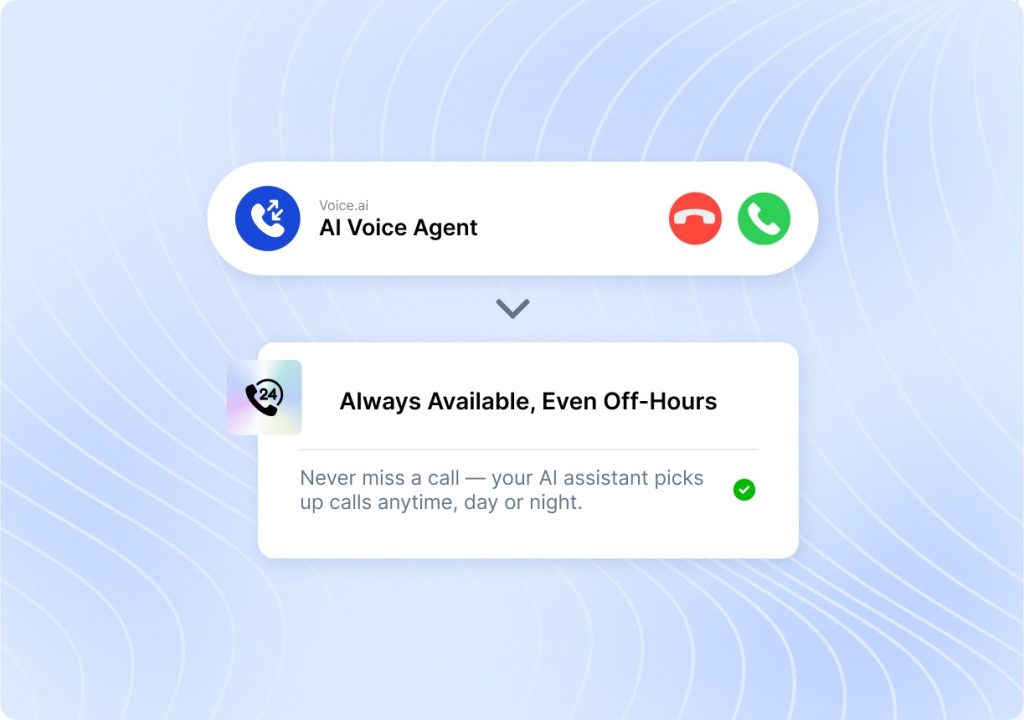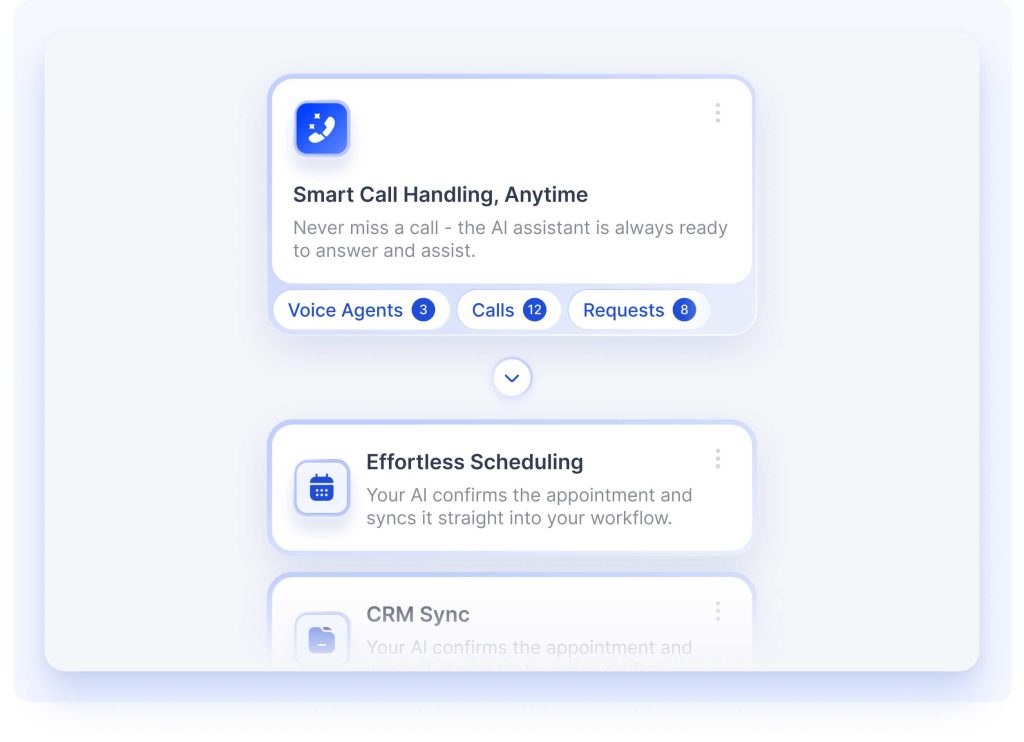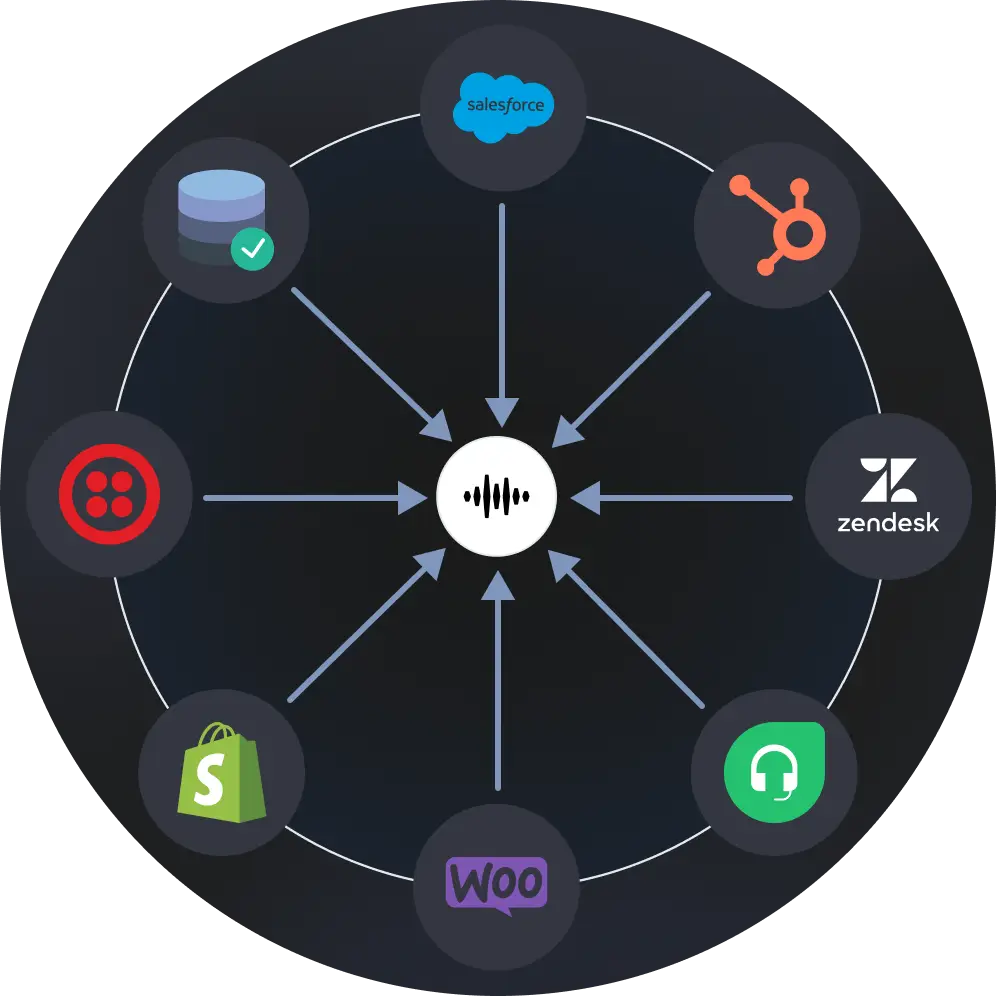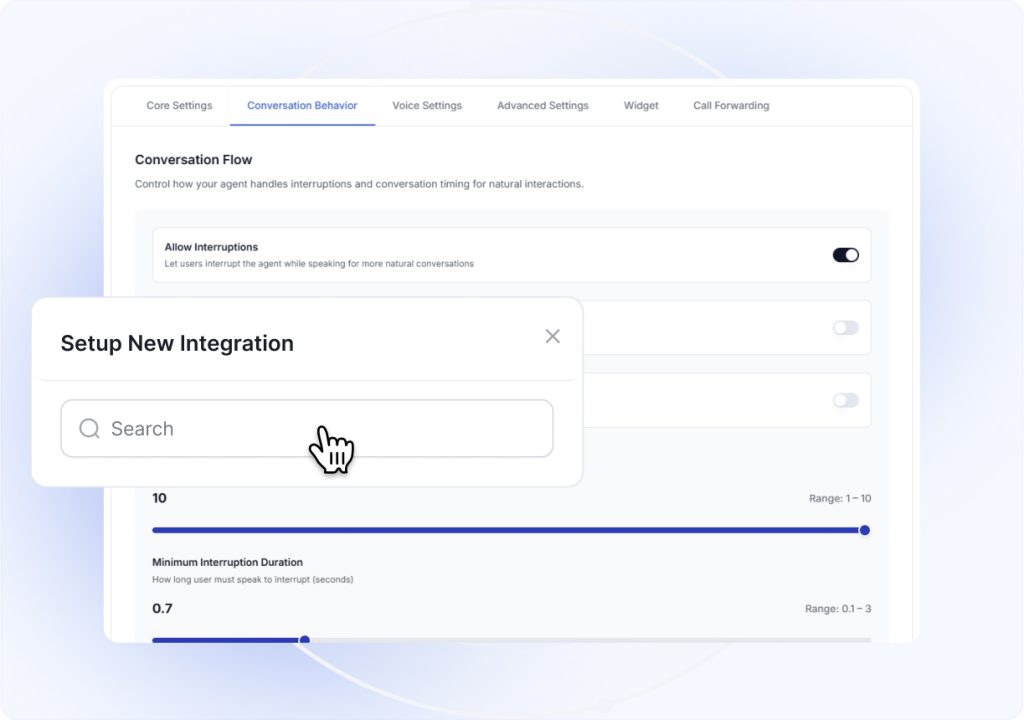Smart Live Call Transfer That Deflects Costs and Delights Customers
Transform your customer interactions with Smart Live Call Transfer.
Discover AI Voice Agents for Smart Live Call Transfer
Smarter Handoffs, Faster Wins
AI handles the first touch, captures intent, and syncs caller data to your CRM in real time. This means live agents receive the full story at handoff and can close higher-value conversations faster.

Outcomes You Can Measure
CIOs: Modernize without heavy lifting
Modernize contact center workflows while keeping your current IVR and telephony in place. Integration-ready connectors let you deploy smart live call transfer quickly and reduce infrastructure strain.
CFOs: Cut costs without hurting experience
Deflect 30 to 50 percent of routine calls to AI, which reduces live agent hours and lowers cost per call. Many customers report improved margins within the first billing cycle while protecting revenue-driving calls.
CX Leaders: Faster transfers that reduce friction
Context-rich handoffs mean callers avoid repeating themselves and live agents start each call informed. The result is higher NPS and shorter handle time for escalated conversations.
Operations: Scalable and measurable
Real-time dashboards track deflection rates, transfer reasons, and SLA compliance. You will identify trends faster and reassign human resources where they generate the most value.
How Smart Live Call Transfer Works
Step 1: AI-first call handling
Incoming calls are answered by AI voice agents trained to handle routine queries and collect intent. This reduces queues and ensures common issues are resolved immediately without needing human intervention.
Step 2: Context capture before escalation
When escalation is required, caller intent, call notes, and recent account data are passed with the transfer. Human agents pick up the call without asking the caller to repeat details, improving CSAT instantly.
Step 3: Priority-based routing
Transfers are routed based on skill set, urgency, and business rules you define in minutes with our no-code setup. The result is fewer misrouted calls and higher first-contact resolution for complex cases.
Step 4: Real-time CRM sync and audit trail
Every interaction is logged and synced to your existing CRM and helpdesk in real time for reporting and compliance. This helps operations trace escalations and measure the ROI of deflection.

Works With Your Systems and Compliance Needs
Plug into existing IVR and telephony
Smart Live Call Transfer integrates with standard PBX, cloud telephony providers, and existing IVR flows so you do not need to rip and replace systems. This ensures adoption is fast and operational disruption is minimal.
CRM and helpdesk sync in real time
Caller notes, intent, and transcripts sync instantly to CRMs and ticketing systems. This direct integration keeps agent desktops populated with context at the moment of transfer.
Enterprise security and regulated markets
Voice AI is built for regulated industries with SOC2 controls and support for HIPAA and GDPR. This means sensitive calls remain secure and compliant while still benefiting from automated handling.
Multilingual and global deployments
Support for multiple languages lets you route and escalate in the customer’s preferred language. Global deployments operate 24/7, cutting wait times regardless of region.

Where Smart Live Call Transfer Drives Impact

Retail and e-commerce: reduce cart abandonment support calls
AI agents answer order status, returns, and FAQs immediately, escalating only complex refund or fraud cases. The result is fewer long queues and a higher conversion rate for callers who need live help.

Healthcare: compliant, consistent intake and callbacks
Routine scheduling, reminders, and basic triage are handled by AI with secure data handling for regulated information. Human clinicians are only involved when cases exceed predefined thresholds.

Finance: secure routine inquiries and prioritize revenue calls
Balance checks and routine inquiries are deflected to AI while escalations that impact revenue go straight to skilled agents with full context. This protects margins and improves time to resolution.

Contact centers: improve agent utilization
Agents spend more time on high-value interactions because AI clears the queue of repetitive requests. Operations see increased agent satisfaction and a drop in onboarding pressure.
Deploy Fast, Start Saving
Pilot in days, not months
Most organizations launch pilot AI agents and initial transfer logic in under two weeks. Rapid pilots prove deflection rates and let you tune routing rules before broader rollout.
No-code configuration and workflows
Build transfer rules, skill-based routing, and escalation paths using our no-code console. Your team configures live call transfer behavior without developer intervention.
Training and tuning for accuracy
Voice AI provides tools to review transcripts, adjust intents, and improve handoff quality quickly. Ongoing tuning helps keep deflection rates high and false escalations low.
What success looks like after 90 days
Expect measurable reductions in live agent volume, shorter average handle time for escalations, and improved caller satisfaction scores. Many customers report cost savings within the first quarter.

Proven Results with Measured Impact
Quantified outcomes
Customers routinely reduce live agent dependency by 30 to 50 percent and report faster resolution for escalated calls. These are tracked through real-time dashboards that sync with your analytics.
Enterprise scale and trust
Voice AI supports millions of users across 42 countries and is used by Fortune 500 and Global 2000 companies. That operational scale shows this approach works at enterprise volumes.
Customer case snapshot
A large e-commerce customer lowered contact center costs and reduced repeat transfers by 40 percent after integrating smart live call transfer. The company regained agent hours for higher-value sales activities.
Security and auditability
Every transfer includes an auditable trail and optional recorded transcripts to support compliance and QA. This visibility makes it easy to refine routing rules and demonstrate SLA adherence.
Smart Live Call Transfer — Frequently Asked Questions
What exactly is Smart Live Call Transfer and how does it differ from standard IVR?
Smart Live Call Transfer uses AI voice agents to resolve routine calls and escalate only when human expertise is required. Traditional IVR forces callers through rigid menus; our approach captures intent conversationally and passes full context to human agents so callers do not repeat themselves, which improves satisfaction and reduces transfer back-and-forth. This hybrid method focuses on automation where it reduces cost while preserving the human touch for complex cases.
How long does it take to deploy Smart Live Call Transfer in an existing contact center?
Deployment timelines vary by scope but initial pilots can be live within days and full rollouts in a few weeks. Voice AI provides prebuilt connectors for common PBX and CRM systems so integration work is minimal, and your pilot can prove deflection rates before expanding.
Can Smart Live Call Transfer integrate with our CRM and helpdesk?
Yes, integrations are a core capability and sync call context, transcripts, and intent to your CRM and ticketing systems in real time. This ensures agents have all relevant data at hand and supports reporting and compliance workflows without manual workarounds.
What languages and regions does Smart Live Call Transfer support?
Our AI voice agents support multiple languages and dialects for global deployments. The platform routes and escalates in the caller’s language so you get consistent service levels worldwide and reduced wait times across regions.
How does Smart Live Call Transfer protect sensitive data and meet compliance needs?
Voice AI is engineered with enterprise security controls and supports SOC2, HIPAA, and GDPR requirements as appropriate for your industry. Transfer records and transcripts are stored and transmitted with encryption, and access controls are applied so regulated data remains protected.
What kind of cost savings and ROI can we expect from Smart Live Call Transfer?
Typical deployments deflect 30 to 50 percent of routine calls which directly lowers live agent hours and cost per call. Many customers see measurable cost reductions within the first quarter and improved agent utilization that drives additional operational gains.
Do we need developers to configure transfer rules and escalation logic?
No-code tools let operations teams build transfer logic, define escalation criteria, and tune intents without developer support. Technical teams can still access APIs for deeper customization, but day-to-day configuration is designed for non-technical users.
How do you measure the quality of transfers and prevent unnecessary escalations?
Real-time dashboards track deflection rates, transfer reasons, and post-transfer CSAT to identify and reduce false escalations. Voice AI includes review workflows so teams can refine intents and handoff criteria, maintaining high accuracy as volume changes.